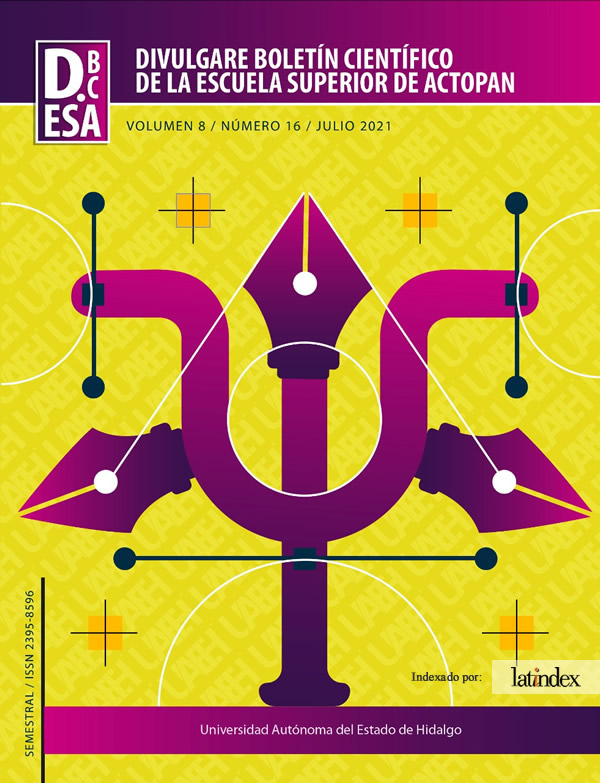Performance in a memory task of visuospatial work in girls aged 8-12 with Child Sexual Abuse.
Abstract
This research compared the performance in a task of visuospatial working memory (VWM) in girls of 8-12 years old with and without child sexual abuse (CSA). The sample was constituded of two groups conformed of a total of 30 institutionalized girls aged 8-12 years old. One group consisted of n = 15 girls with a history of CSA, while the other group was made up of n = 15 girls without CSA experience. VWM was evaluated by applying the CubMemPC computerized test. Results: Based on the analysis carried out using the T-Student test, the working hypothesis was verified for independent samples, stating that there are significant differences between the control group and the experimental group on VWM all executions of the control group being greater in relation to correct responses [t (28) = 3.22, p <0.01], trail and span [t (28) = 2.36, p <0.05], however, in the reaction time there were no differences between the groups [t (28) = 2.36, p <0.05] Which indicates that girls aged 8-12 years old with CSA have a lower performance in an VWM task than girls without a history of CSA.
Downloads
References
Vitriol, V., Vásquez, M., Iturra, I. y Muñoz, C. (2007). Diagnóstico y abordaje de secuelas por abuso sexual infantil, en tres mujeres consultantes a un servicio de mental de hospital general. Revista Chilena de Neuro-Psiquiatría, 45 (1), 20-28.
Secretaría de Salud. (2006). Informe nacional sobre violencia y salud. México: Secretaría de Salud.
Tyler, K. (2002). Social and emotional outcomes of childhood sexual abuse: A review of recent research. Aggression and Violent Behavior, 7(6), 567-589.
Bernate, M., Baquero, M. y Soto, F. (2009). Diferencias en los Procesos de Atención y Memoria en Niños con y sin Estrés Postraumático. Cuadernos de Neuropsicología. Panamerican Journal of Neuropsychology, 3(1), 104-115.
Ison, M. y Korzeniowski, C. (2016). El rol de la atención y percepción viso-espacial en el desempeño lector en la mediana infancia. Psykhe, 25(1), 1-13.
Nastoyashchaya, E. y López, L. (2015). Diferencias entre hombres y mujeres jóvenes en memoria de trabajo. Revista Neuropsicología, Neuropsiquiatría y Neurociencias, 15(2), 35-51.
Anderson, C., Teicher, M., Polcari, A. y Renshaw, P. (2002). Abnormal T2 relaxation time in the cerebellar vermis of adults sexually abused in childhood: potential role of the vermis in stress-enhanced risk for drug abuse. Psychoneuroendocrinology, 27(1), 231-244.
Zolotor, J., Runyan, D., Dunne, P., Jain, D., Péturs, R., Ramírez, C. y Isaeva, O. (2009). Herramienta de evaluación de abuso infantil Versión para niños (ICAST-C): desarrollo de instrumentos y pruebas piloto multinacionales. Abuso y negligencia infantil, 33 (11), 833-841.
Bustos, P., Rincón, P., & Aedo, J. (2009). Validación preliminar de la escala infantil de síntomas del trastorno de estrés postraumático (child PTSD symptom Scale, CPSS) en niños/as y adolescentes víctimas de violencia sexual. Psykhe (Santiago), 18(2), 113-126.
Ostrosky, F., Gómez, M., Ardila, A., Roselli, M., Pineda, D. y Matute, E. (2003). Neuropsi: atención y memoria: 6 a 85 años. México: American Book Store.
Kovacs, M. (2004). Inventario de depresión infantil (CDI). España: TEA ediciones.
Hernández, L., Bermúdez, G., Spence, S., González, M., Martínez, J., Aguilar, J. y Gallegos, J. (2010). Versión en español de la Escala de Ansiedad para Niños de Spence (SCAS). Revista Latinoamericana de Psicología, 42 (1), 13-24.
Wechsler, D. (2007). Prueba de inteligencia para niños WISC-IV. México: Manual moderno.
Guevara, M., Sanz, A., Hernández, M. y Carrillo, K. (2014). CubMemPC: Prueba computarizada para evaluar la memoria a corto plazo visoespacial con y sin distractores. Revista mexicana de ingeniería biomédica, 35(2), 171-182.











